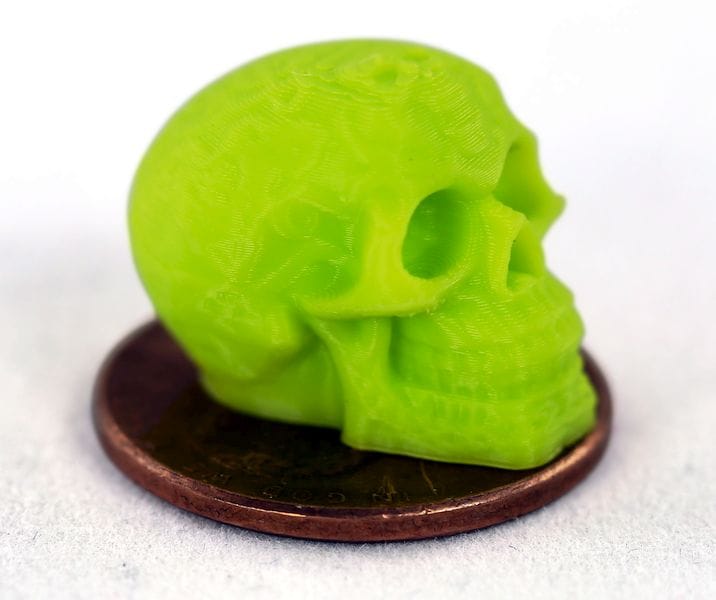![Yes, that's a penny! A new extruder from Aleph Objects printed this very tiny object [Source: Aleph Objects]](https://fabbaloo.com/wp-content/uploads/2020/05/image-asset_img_5eb0a974bb7df.jpg)
LulzBot unexpectedly announced a new toolhead suitable for very, very tiny 3D prints.
Colorado-based Aleph Objects has been producing a very highly regarded line of desktop 3D printers under the LulzBot banner for some years now, achieving success as one of the higher volume manufacturers among hundreds of competitors. The company is often experimenting with different approaches and this announcement is no different.
The new toolhead is a combination extruder/hot end mechanism that can likely fit onto most of their models, but has specifically been demonstrated on their popular LulzBot Mini 2 desktop 3D printer.
This printer, announced earlier this year, follows the industry pattern of offering a smaller-sized volume version of their flagship equipment. It’s a way to break the “it’s too expensive” problem, as the mini versions of machines are typically less expensive.
But the build volume is indeed smaller on mini machines, limiting them to printing only smaller objects.
LulzBot’s new announcement seems to offer a bonus to those with smaller build volumes: if you can’t print big, then print better!
The new Aerostruder v2 Micro Tool Head is composed of an E3D Titan Aero extruder and hot end, but with a small 0.25mm nozzle. This is combined with new hot end ducting for cooling that provides a full 360 degree flow of cool air.
The air flow, I think, is the most critical part of this arrangement, as the cooling helps freeze the otherwise soft material as it is deposited on the print. If you don’t cool the material and it is poorly supported, it may slump, lowering print quality.
While many desktop 3D printers do indeed employ cooling systems, the most commonly encountered design flaw is that the cool air is blasted at the print from only a single direction. That cools one side effectively, but the other side is subject to slumping. Some users of such systems even organize their prints to have the delicate parts exposed to the cooling air.
But that’s not an issue with the new Aerostruder, as its 360 degree airflow should encourage high quality prints.
This is very important when 3D printing with a 0.25mm nozzle, as the features printed are that much smaller. Any misprinted features are going to stick out, particularly on the smaller sized prints that emerge from the small-volume LulzBot Mini 2.
LulzBot developed this option in conjunction with their partnership with UK-based E3D Online, who produce several key 3D printer components used in many manufacturers’ machines, including the LulzBot line. This is a tip to machine developers: you don’t have to design everything yourself; just buy great components.
The prints produced by the new extruder and Mini 2 device look quite good, especially for a thermoplastic extrusion machine. I’d say the print quality is not quite as good as you might see from a properly configured resin-based 3D printer, but Aleph Objects is coming close.
Aleph Objects says the new Aerostruder will be available for purchase in September, not far off. But pricing is still not yet released. I expect that some existing LulzBot owners may be interested in upgrading their extruders, if permitted by Aleph Objects.
Via LulzBot

